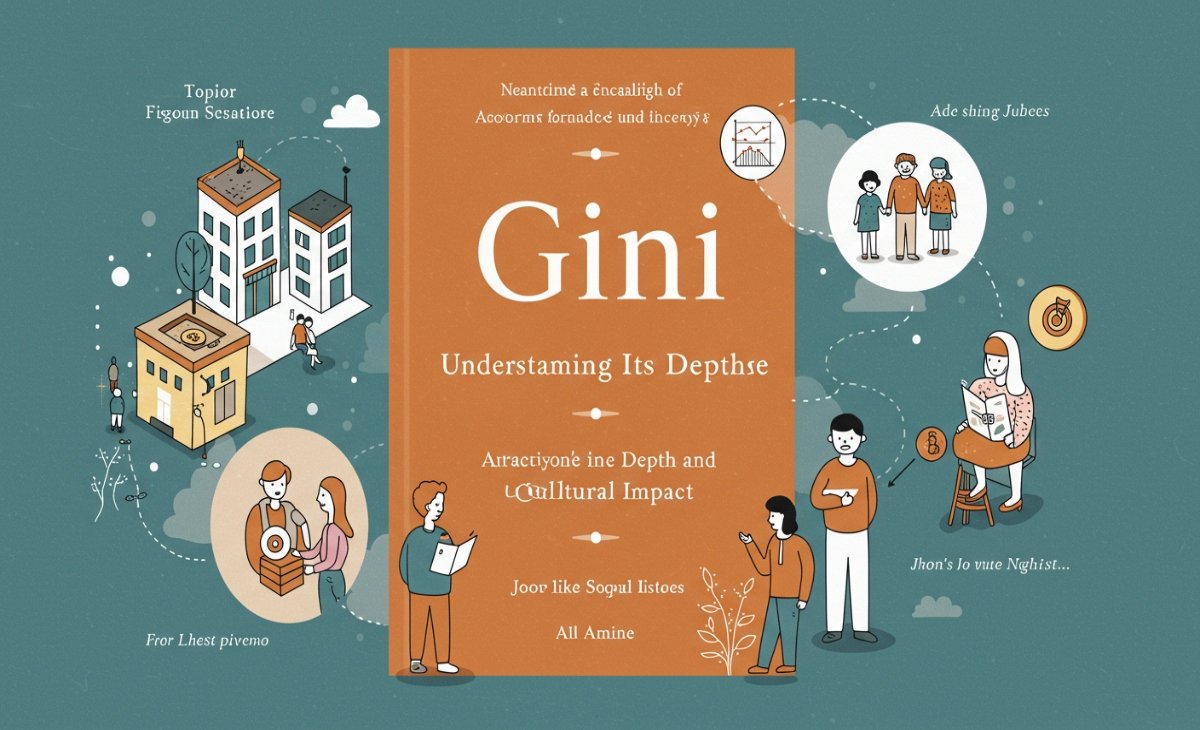The term giniä holds a unique place in various linguistic, cultural, and sometimes mythical contexts. Though it may sound like a modern innovation, giniä has roots that can be traced back to ancient terminologies and traditional belief systems. Often associated with enigmatic power, hidden knowledge, or cultural specificity, the term has transcended singular meaning and acquired multiple layers of interpretation. It may represent a name, a cultural icon, or a conceptual identity, depending on the geographical or linguistic usage. This blend of mystique and multiplicity gives giniä an allure that piques interest in different scholarly and popular domains.
Linguistic Dimensions of Giniä
In linguistic analysis, giniä is notable for its phonetic construction. The use of the diacritical mark above the letter ‘a’ gives it a lyrical, almost musical quality. The accent not only changes pronunciation but can also alter semantic associations. This feature lends itself to poetic expression, which is one reason why giniä appears in song lyrics, poetry, and spoken word performances. It stands as a term that can carry emotional weight, and its structure makes it memorable and evocative in both written and spoken form.
Mythological and Symbolic Interpretations
In mythological traditions, particularly those emerging from folk and oral histories. Giniä is sometimes invoked to symbolize a spirit or a guardian figure. In such contexts, the term embodies protective or transformational qualities. It can be linked to nature spirits or guiding forces in tales passed down through generations. This association with the mystical renders giniä an important symbol in ceremonies, storytelling, and rituals. Its invocation might suggest a presence that is both revered and feared, capturing a duality that adds to its narrative strength.
Cultural Representations of Giniä
Giniä has also been represented in modern cultural productions. From literature to cinema, the name is employed to signal mystery, elegance, or exoticism. Writers might use it to name a character who stands out as enigmatic or profoundly wise. Filmmakers may choose the name to underline a theme of transformation or ancient wisdom. In this way, giniä functions as a cultural cipher, capable of conveying multiple meanings depending on the context in which it appears. These creative uses have helped the term remain relevant across changing cultural landscapes.
Giniä in Contemporary Discourse
In the digital age, giniä has found new platforms and meanings. It may appear as a username, brand identity, or even a form of artistic tag in visual and multimedia art. The ease with which it is recognized yet not immediately understood makes it a popular choice for those seeking an identity that is unique but not overly obscure. Influencers, creators, and entrepreneurs may adopt giniä to establish a personal or corporate brand that communicates creativity, independence, and a touch of mystery.
Societal Perceptions and Giniä
Public perception of giniä often depends on exposure and context. In some circles, it is seen as sophisticated and avant-garde. In others it is connected with cultural authenticity or ancestral pride. This range of perception reflects the adaptability of the term. It is not bound by a fixed definition but is instead shaped by the lens through which it is viewed. This flexibility makes giniä both powerful and inclusive, allowing it to serve a range of functions within society.
Artistic Expressions Involving Giniä
Giniä is frequently featured in artistic creations. Painters might incorporate the word into their pieces to symbolize a muse or abstract concept. Poets may weave giniä into their verses to evoke emotion or signify change. Musicians might craft lyrics that include the term to provide a sense of depth or cultural resonance. The universality of artistic language allows giniä to transcend borders and connect with global audiences, making it a favored motif in cross-cultural and interdisciplinary works.
Philosophical and Psychological Layers of Giniä
Philosophically, giniä can be explored as a representation of the self or inner truth. Its elusive definition lends itself well to introspective inquiries. It can serve as a metaphor for identity, transformation, or enlightenment. In psychological discussions, it may be likened to archetypes or unconscious forces that drive behavior and shape personality. Thus, giniä occupies a conceptual space where language, thought, and emotion converge.
Educational and Academic References to Giniä
In academia, giniä might be the subject of ethnographic studies, linguistic research, or comparative literature analysis. Scholars might explore its appearances in different texts or its usage in various dialects. The term can also be analyzed for its impact on cultural identity and language evolution. This scholarly attention not only validates its significance but also ensures that giniä continues to be examined and understood through rigorous inquiry.
Giniä in the Global Context
As globalization brings cultures into closer contact, the reach of giniä expands. It may be adopted in multilingual communities or find resonance in diaspora narratives. Its appeal lies in its hybrid nature—it is specific yet universal, traditional yet adaptable. This makes it a compelling term for those navigating complex cultural identities or seeking language that resonates across boundaries.
The Future of Giniä as a Concept and Term
The journey of giniä is far from over. As language and culture evolve, so too will the ways in which the term is used and understood. It may gain prominence in new artistic genres, find new applications in branding and identity, or become a subject of future academic exploration. Its layered meanings and adaptable nature position it well for continued relevance in the shifting linguistic and cultural landscapes.
Conclusion
Giniä is more than just a term; it is a rich and evolving symbol of identity, culture, and meaning. Its journey from ancient myth to modern media illustrates the power of language to adapt and endure. Whether encountered in a poem, a painting, or a philosophical text, giniä invites contemplation and connection. As we continue to navigate a world filled with complexity and nuance, such terms become essential tools for understanding and expressing our shared human experience.

